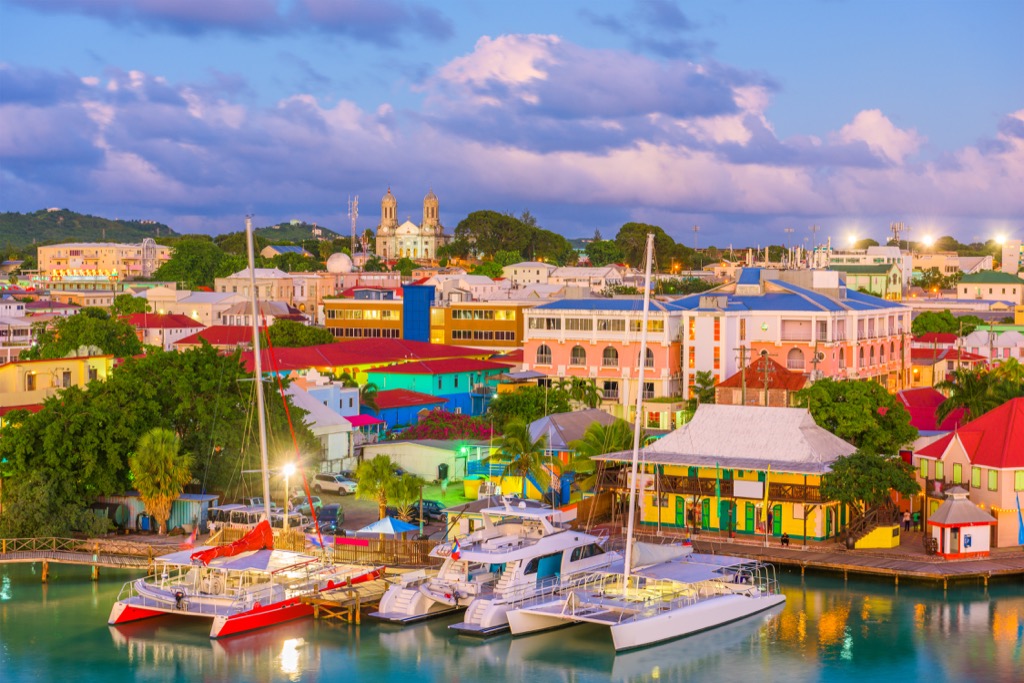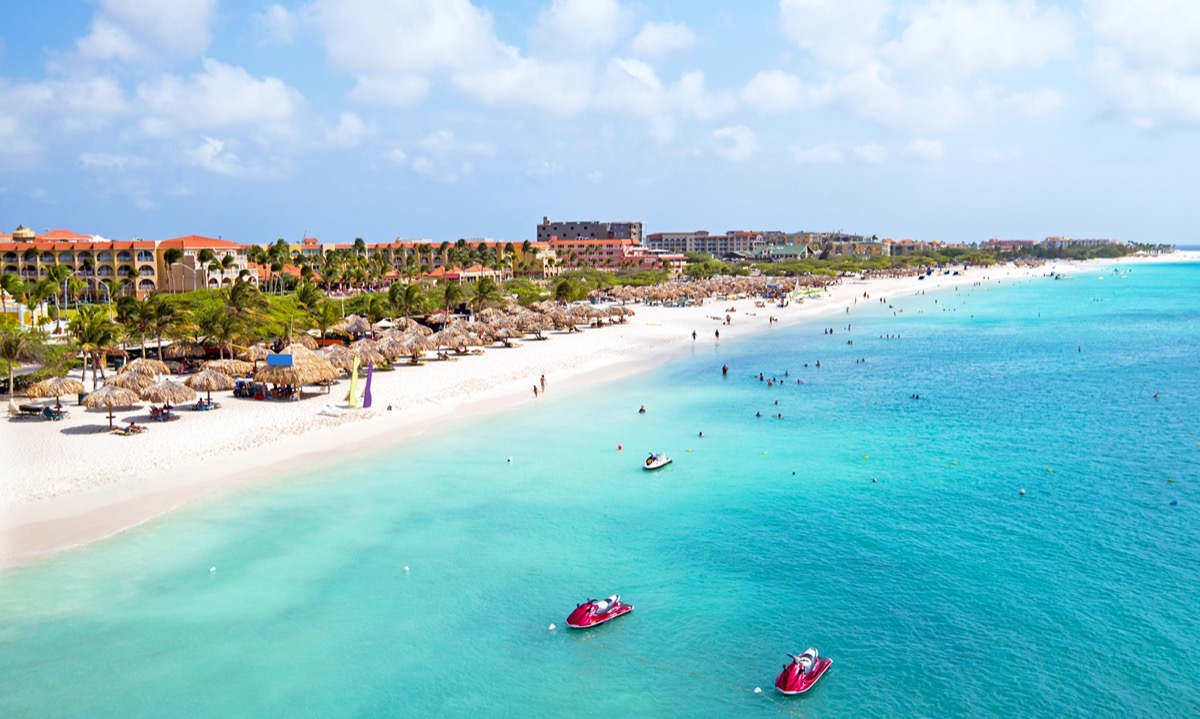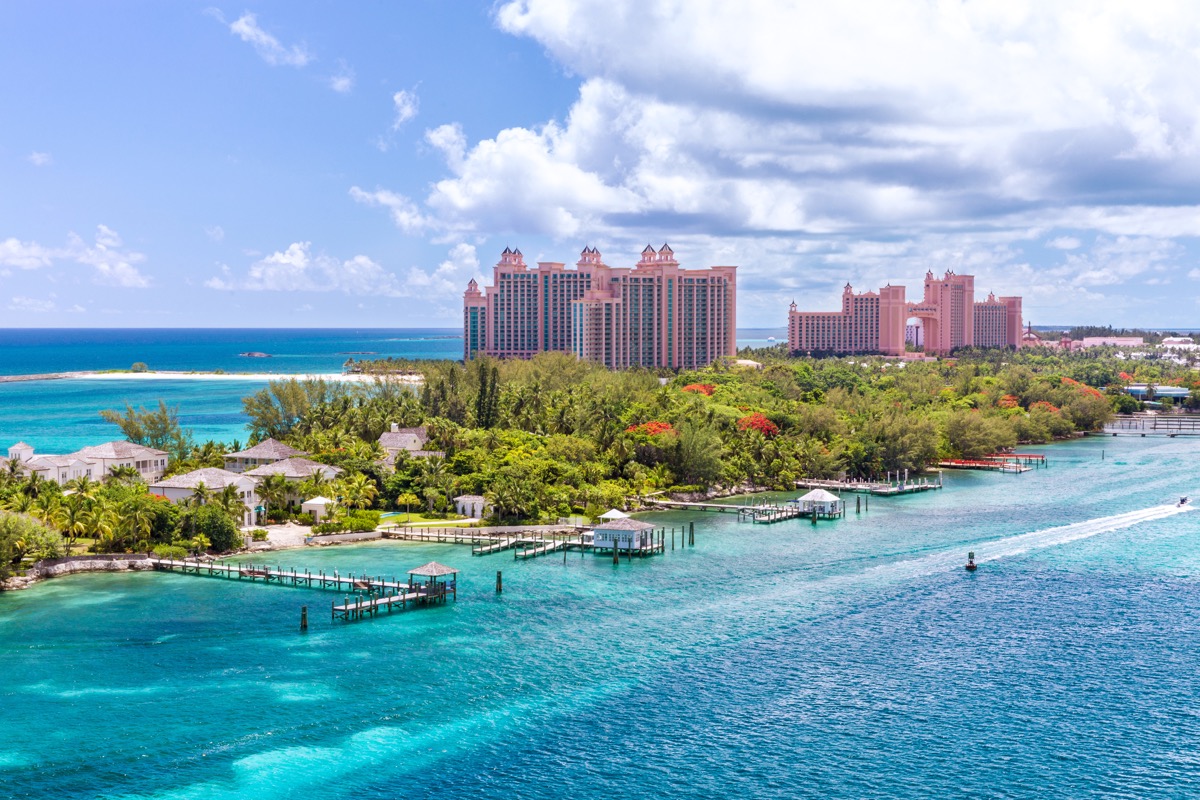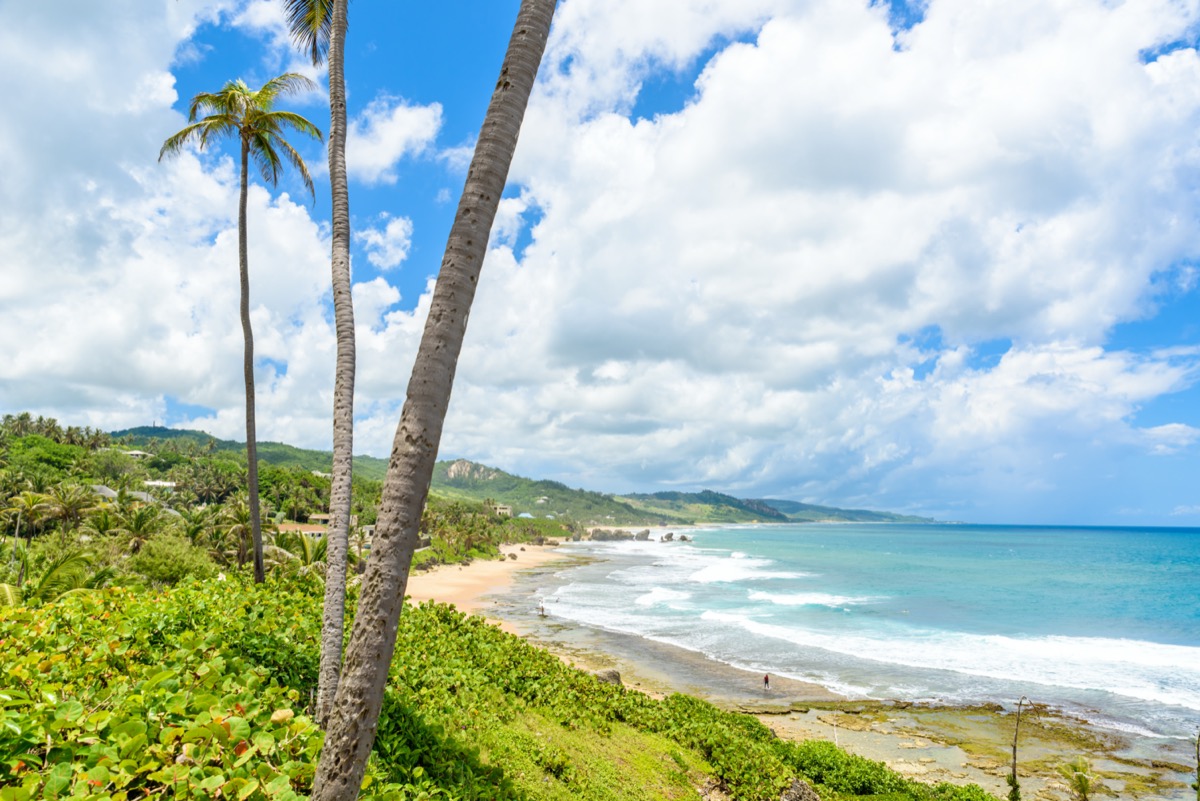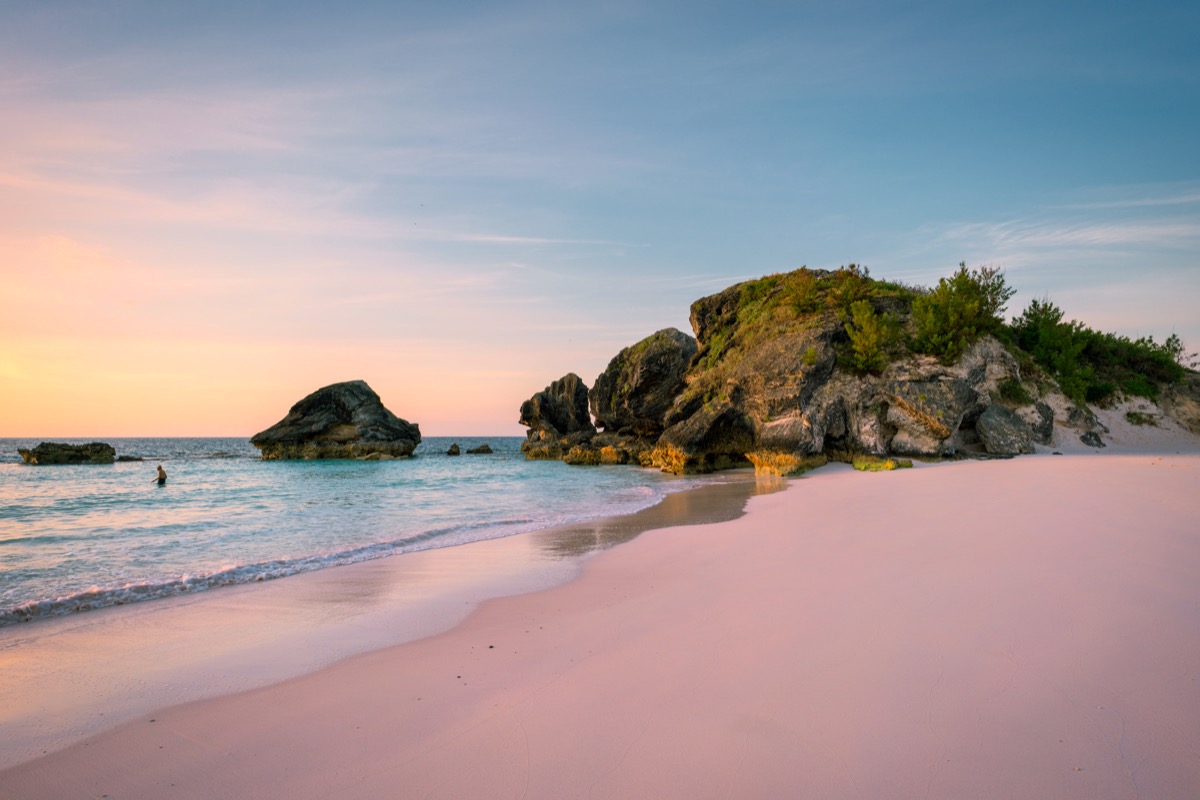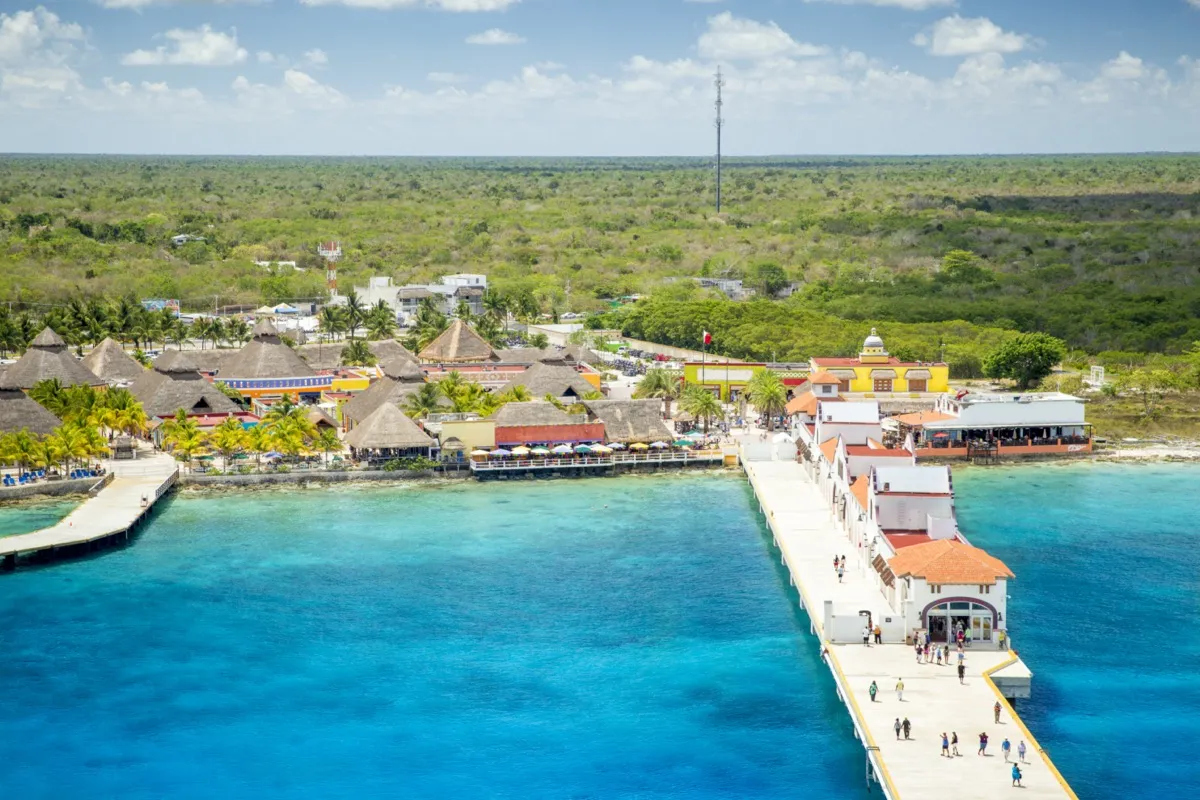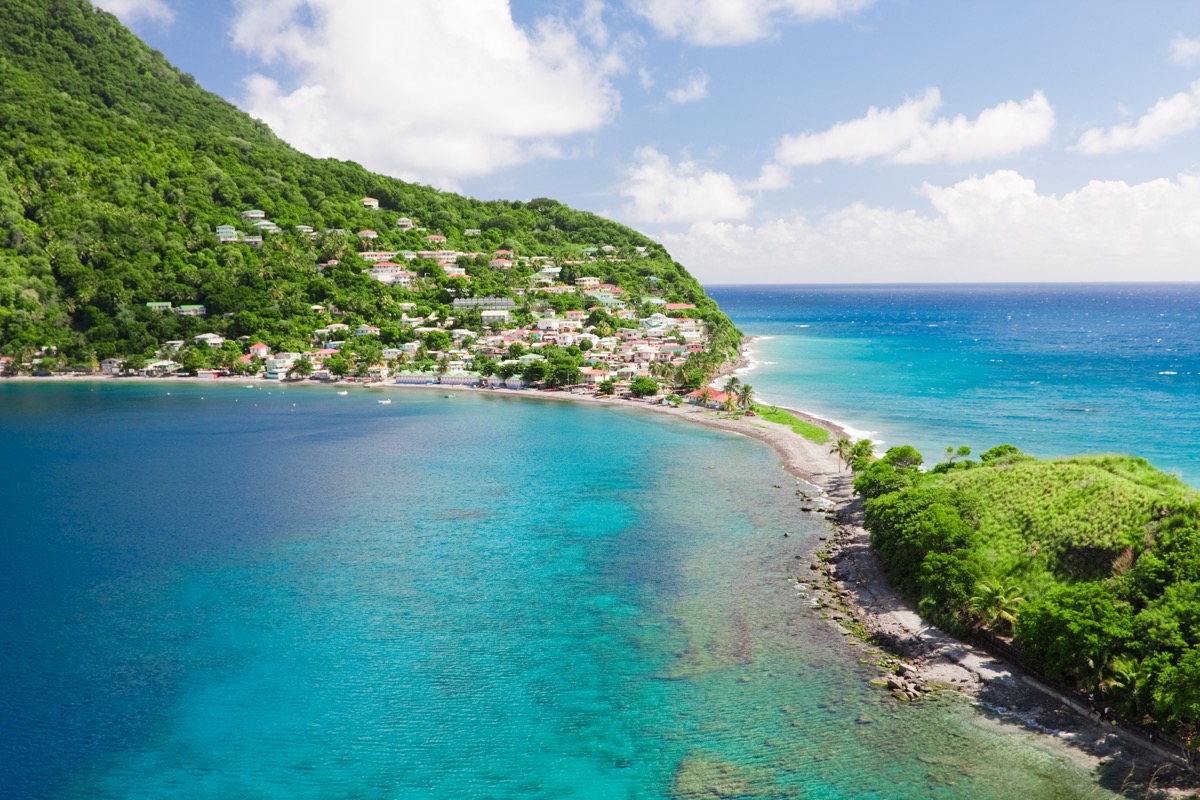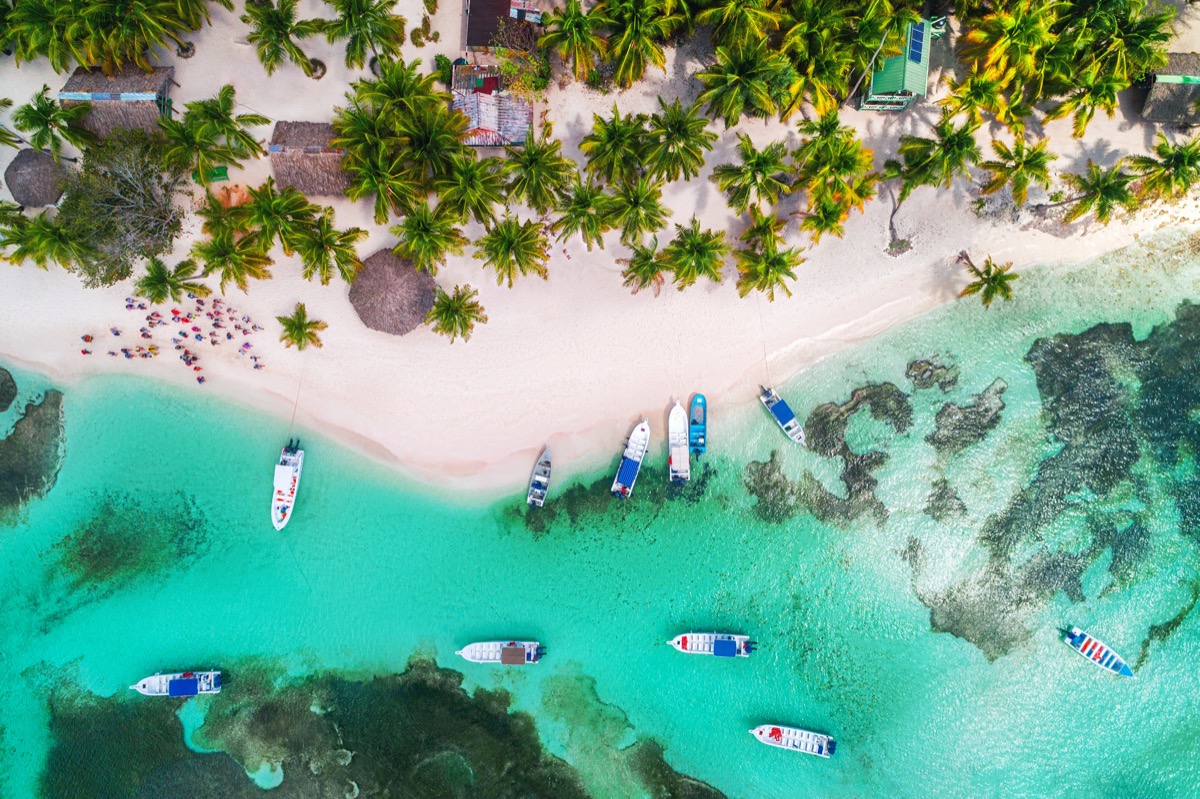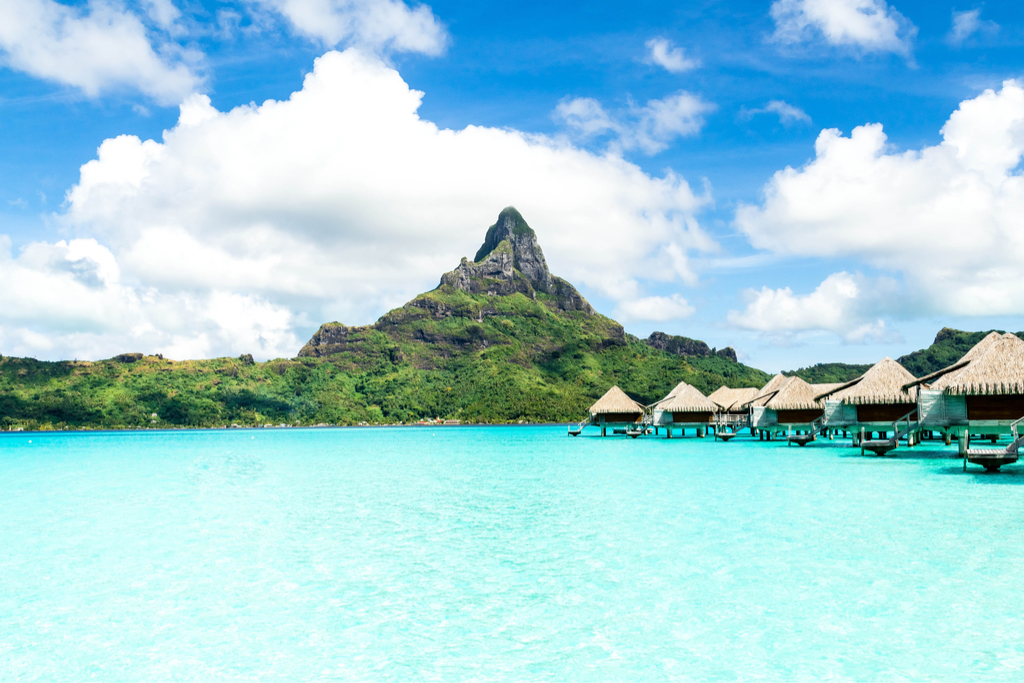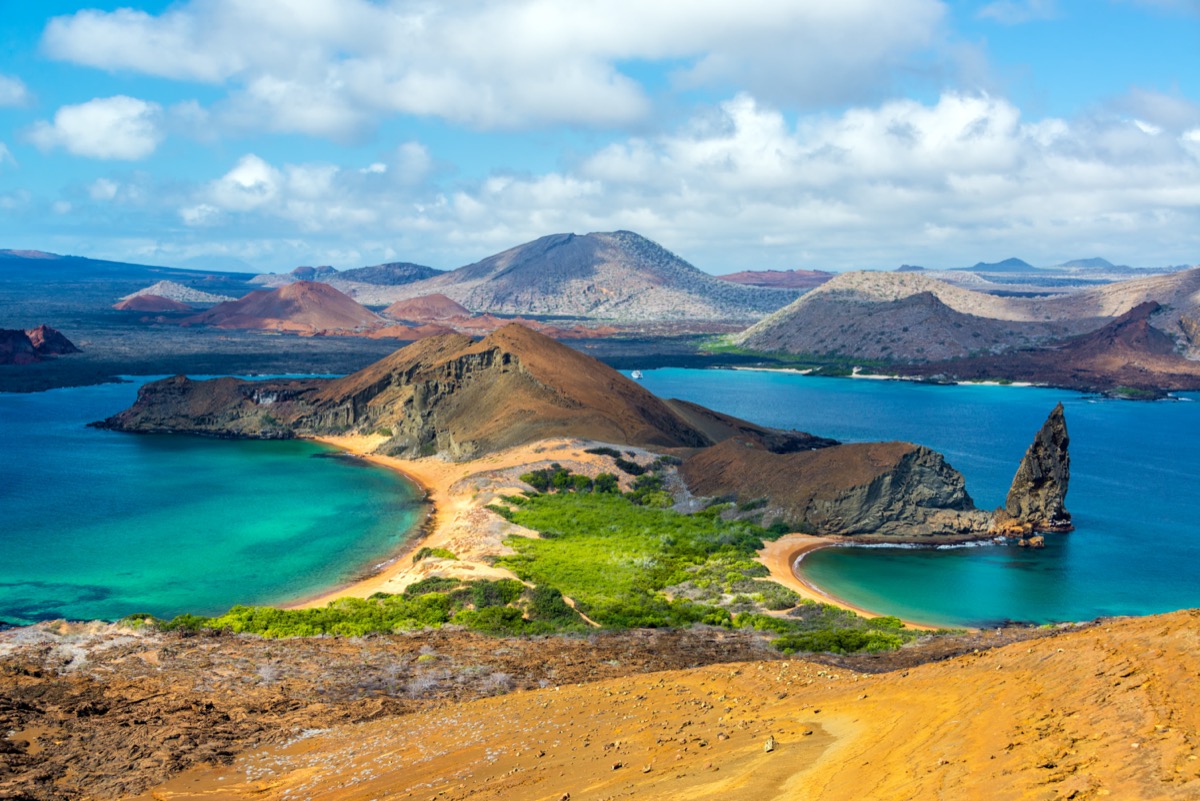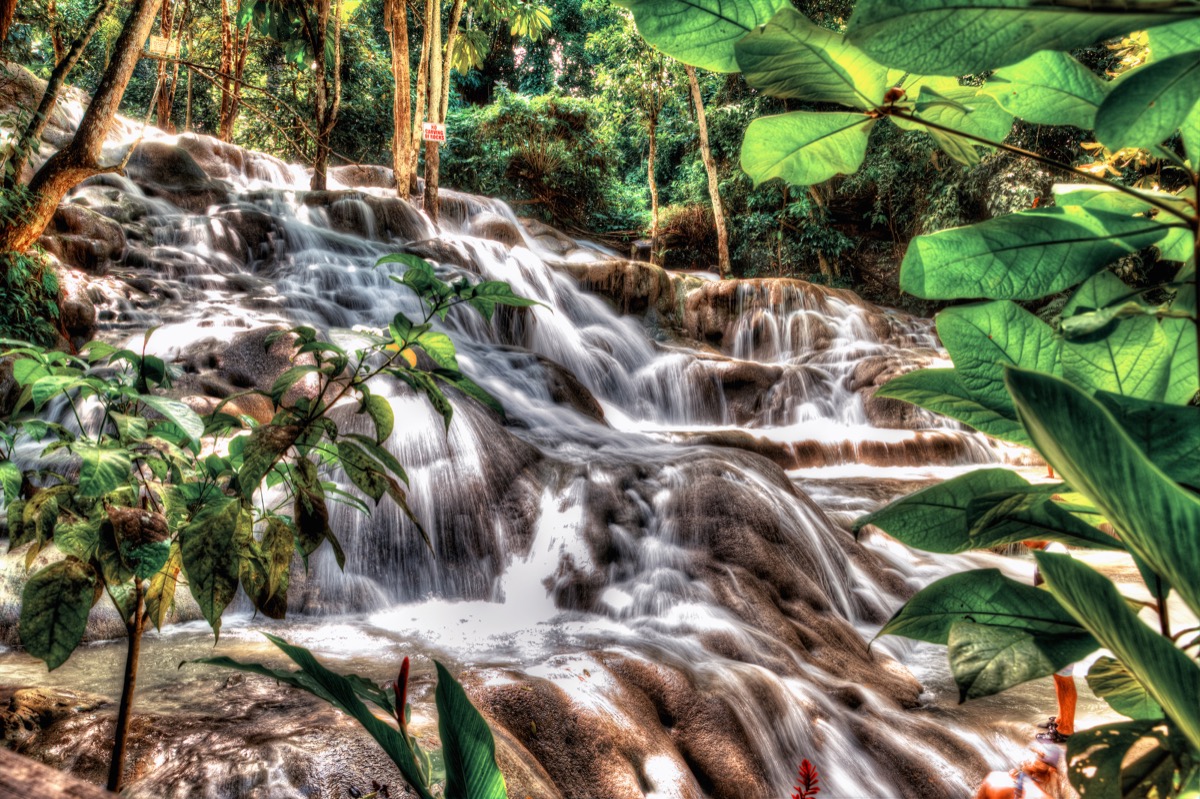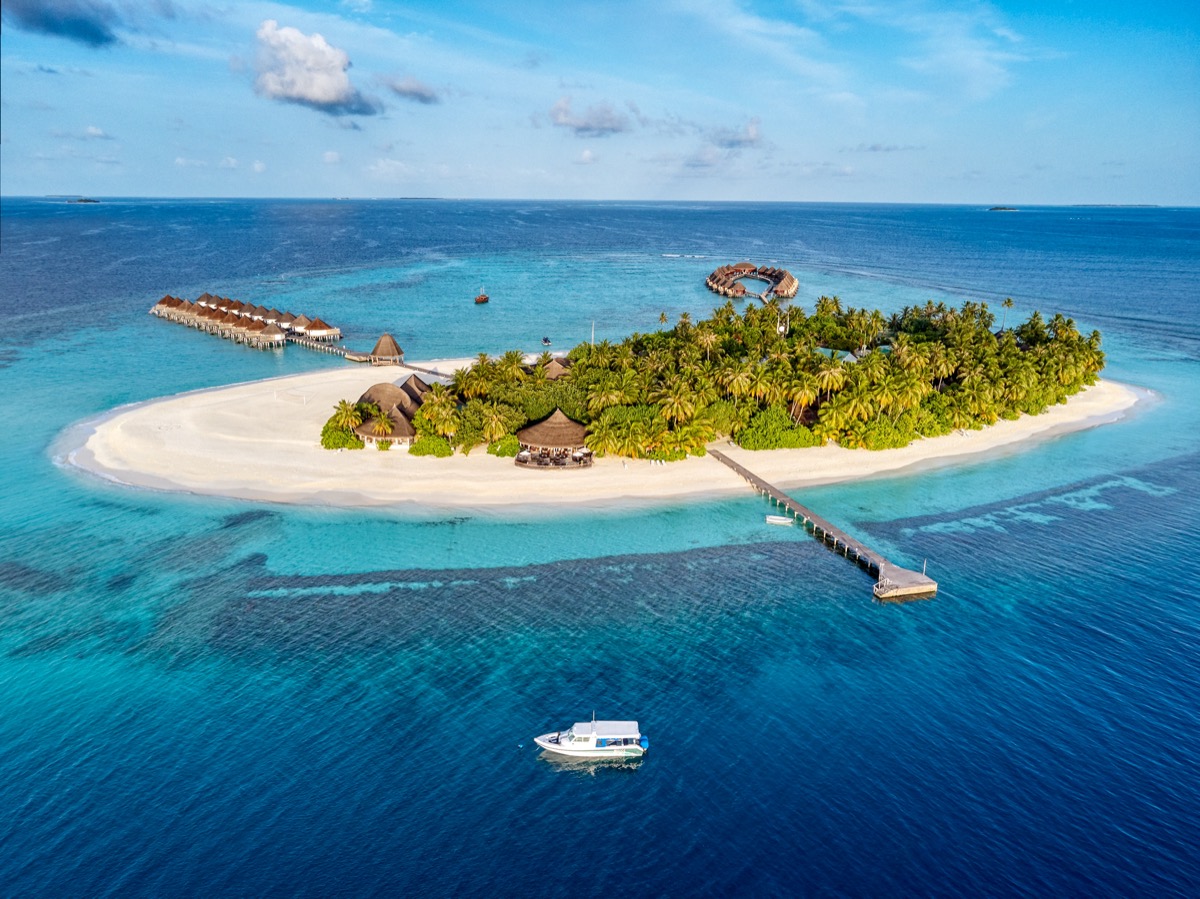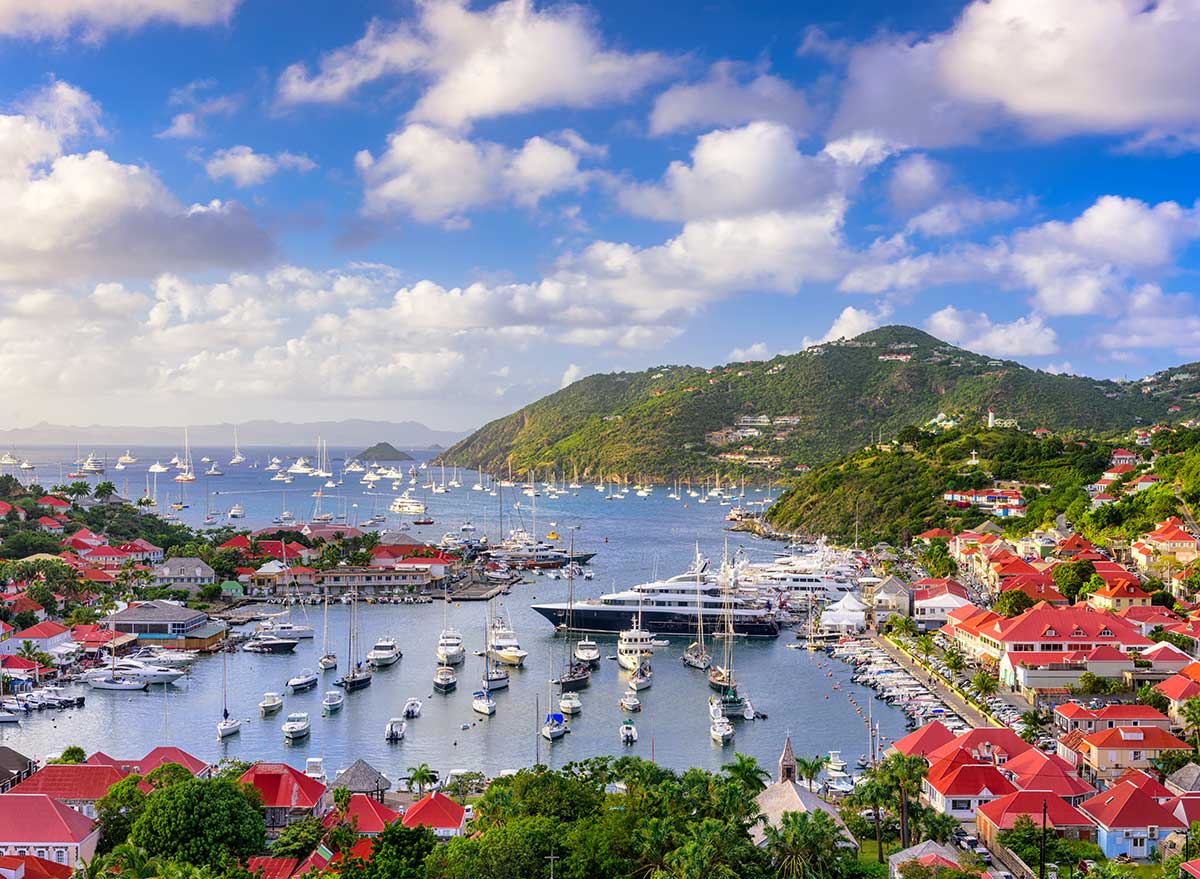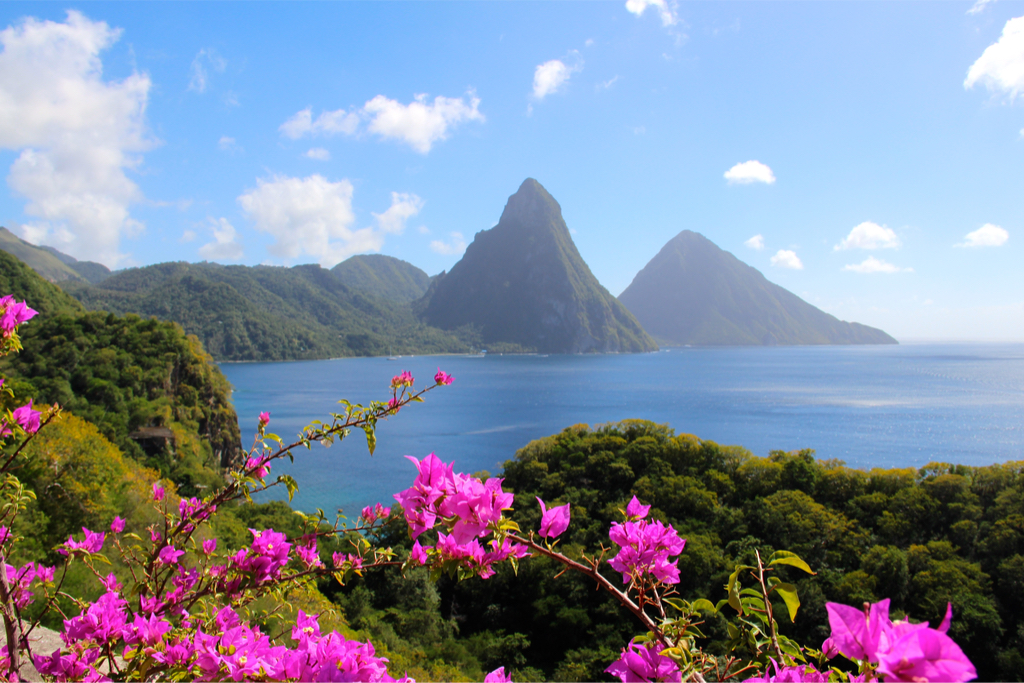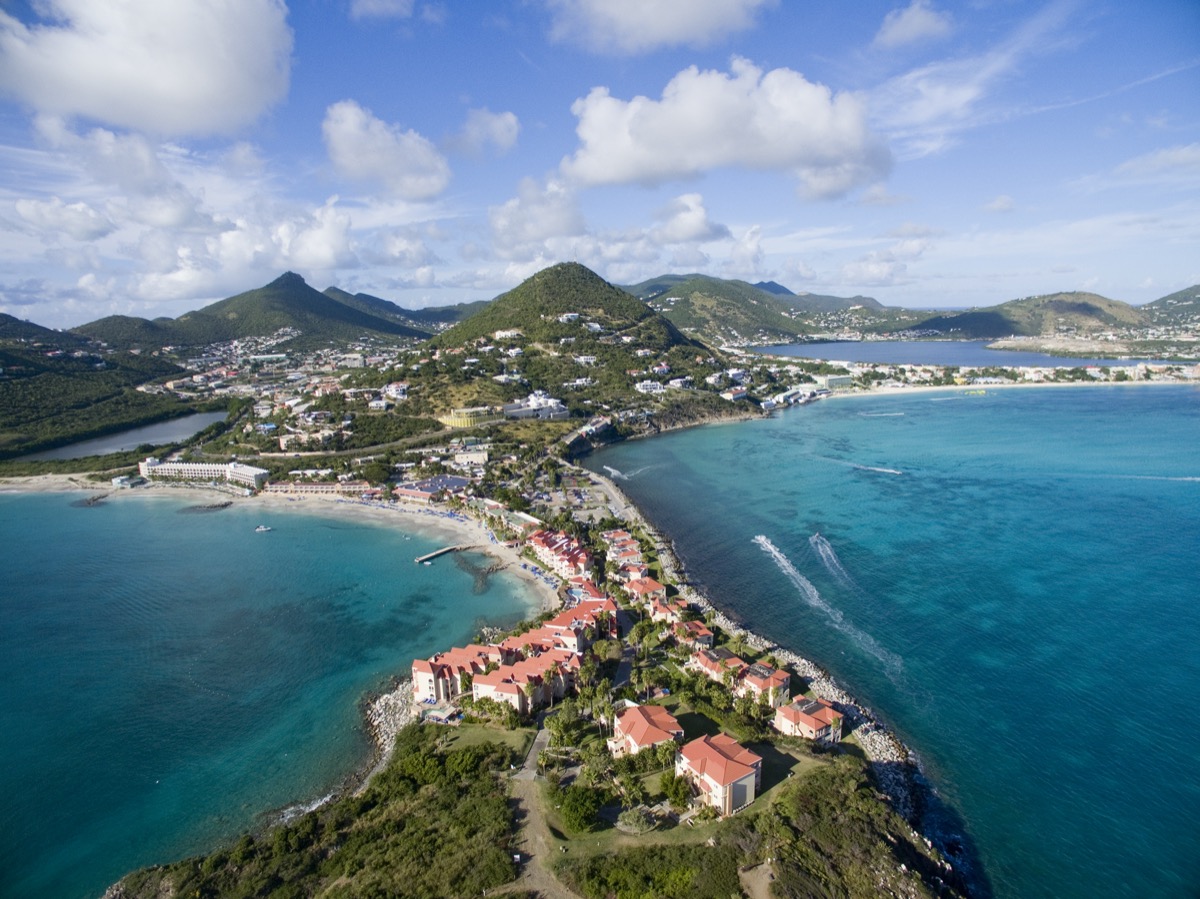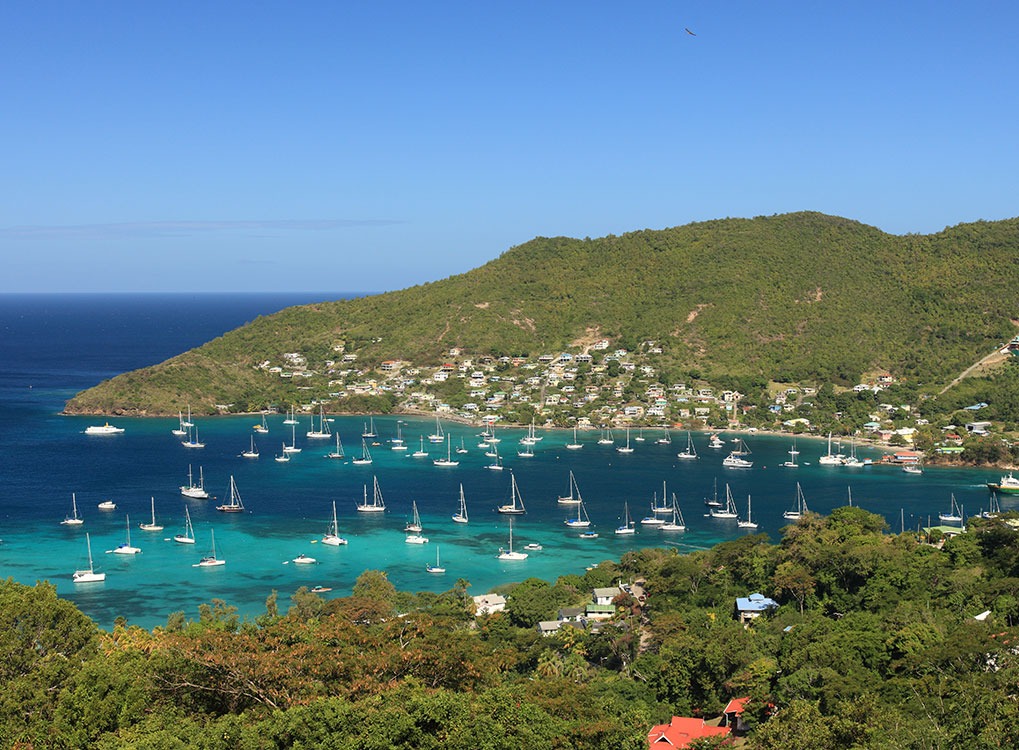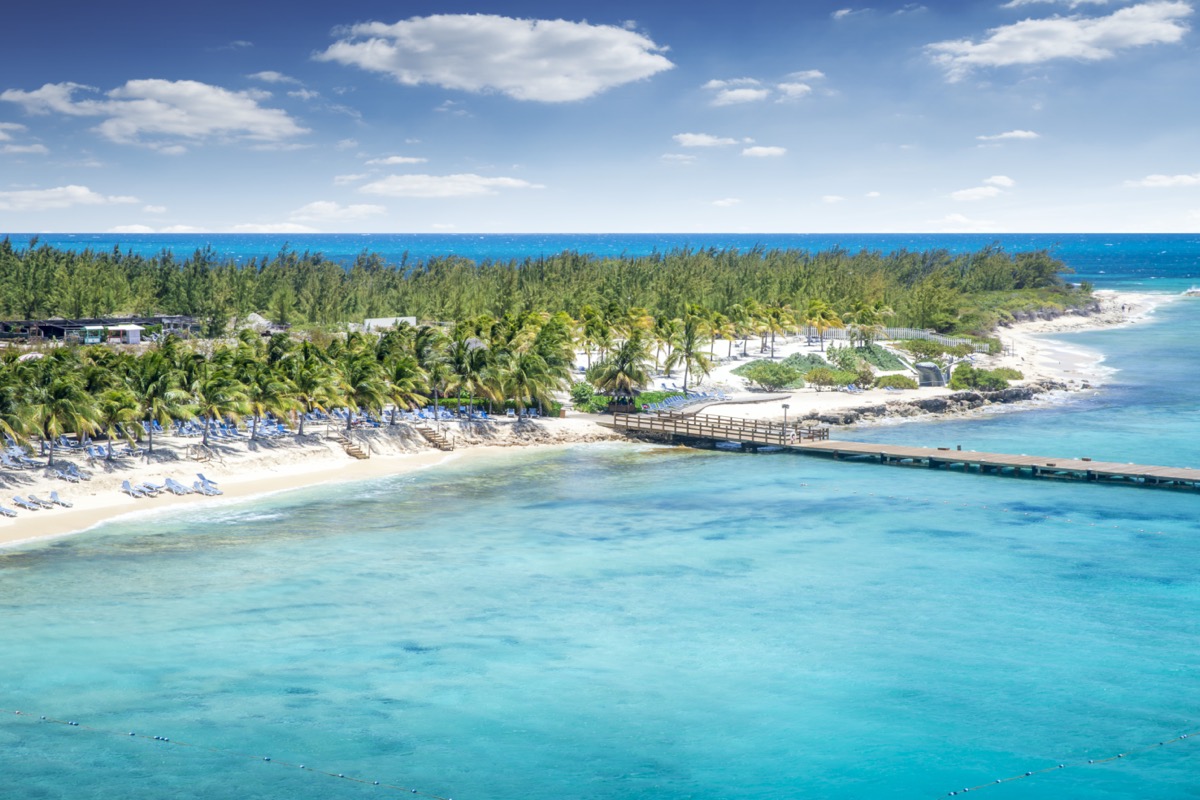All this said, we do want to bring you the latest information about destinations that are “open.” While nearly every place on our list requires a coronavirus health questionnaire to be filled out prior to arrival, here’s what you absolutely need to know about the few beautiful islands that you can technically visit today. Just remember that all of this information can change at a moment’s notice, so it’s essential to double—and triple—check the latest updates from the country’s authorities before making any travel plans. And if you do decide to travel, watch out for these 7 Worst Mistakes to Avoid If You Have to Fly Right Now. Travelers who fly to Antigua and Barbuda are required to have a negative COVID-19 PCR test taken within seven days of their arrival to the islands. If you’re arriving by boat, the requirements are a little murky; per the tourism board, “Passengers arriving by sea (private yachts/ferry services) are subject to quarantine according to guidelines issued by Port Health.” All travelers must wear a mask in public spaces at all times—noncompliance can result in a whopping $5,000 fine or six months in jail. While some hotels, restaurants, bars, and tour operators are open for business, they’re limited in scope. Most food and beverage establishments are open for take-out and delivery only. While beaches are open, Antigua and Barbuda had an 11 p.m. to 5 a.m. curfew in place through July 31. It’s unclear whether or not that curfew will be reinstated in the future. And for more tropical escapes, check out the 30 Most Magical Islands on the Planet. All visitors to Aruba will need to present a negative COVID-19 PCR test taken within 72 hours of arrival, with results posted at least 12 hours before arrival. U.S. travelers from specific states with low coronavirus rates will be able to take PCR tests upon arrival—the list changes regularly, so check here for updates. If you do take a PCR test upon arrival, you’ll have to quarantine at your own expense until your test results are in. Visitors are also required to purchase travel insurance from Aruban authorities, which starts at $15 per day but is based on age and length of stay. The good news is many businesses are open, so once you clear all the health checks, you’re good to go. Travelers to the Bahamas must present a negative COVID-19 PCR test whose results are valid for 10 days from the date of testing. Even with a negative test, all visitors must quarantine for 14 days. On top of that, there are no commercial flights from the U.S. right now, so you’d have to get there via a private jet or yacht. As for restrictions once you’ve crossed the border, there are a lot. Inter-island travel is banned, some islands have closed their beaches (even at hotels), nightclubs and casinos are closed, and indoor and outdoor dining is prohibited (take-out is okay). Businesses cannot stay open later than 6 p.m., there’s a curfew from 7 p.m. to 5 a.m. on weekdays and 24/7 through the entire weekend, and activities where people congregate are banned (religious services, sporting events, and general social gatherings, etc.). We highly recommend contacting Bahamian authorities before you plan a trip, as these rules change regularly. Just a few weeks ago, U.S. travelers were banned, though that restriction has since been rolled back. And for other off-the-grid islands, check out the 13 Stunning Secret Caribbean Islands You’ve Never Heard Of. It’s strongly suggested, but not required, that visitors to Barbados present a negative COVID-19 PCR test taken within 72 hours of arrival. You can, however, be tested on arrival at satellite testing facilities, where you’ll have to quarantine until your results are in—luckily, these facilities are hotels. Travelers will be monitored for seven to 14 days after their arrival, depending on whether or not they’re coming in from a high-risk country (yes, the U.S. is one). Some hotels, restaurants, bars, and tourist attractions are open, but not all are.ae0fcc31ae342fd3a1346ebb1f342fcb Visitors to Bermuda must present a negative COVID-19 PCR test taken within 72 hours of arrival, but they’ll also be tested again at the airport, then again on days three, seven, and 14 of their trip, if they’re in town that long. Testing is at the expense of visitors and costs a flat fee of $75 upon arrival. Visitors are also required to check and record their temperature twice daily for the first 14 days of their trip. Businesses are largely open, and visitors are welcome to frequent them as long as they wear masks and adhere to social distancing guidelines. Though the land border between the U.S. and Mexico is closed, Americans can fly into the country, and technically, they don’t even need to present a negative COVID-19 test. You may, however, be subject to temperature tests. If you’re looking for an island getaway, you can head to Cozumel on the East Coast, where businesses are generally open. Note: Mexico has recorded more than 500,000 cases and nearly 50,000 deaths in the country—and both those numbers are rising rapidly—so enter at your own risk. And if you’d rather stay closer to home, check out the 13 Secret Islands in the U.S. You Never Knew Existed. All visitors to Dominica must present a negative COVID-19 PCR test taken between 24 and 72 hours prior to arrival, and U.S. visitors may have to undergo additional testing. Most businesses are open in Dominica, but they’re adhering to social distancing policies—restaurants, for instance, are operating at partial capacity. It’s all about the honor system in the Dominican Republic. Visitors must sign a Health Affidavit stating that they haven’t experienced any coronavirus symptoms in the last 72 hours. Your temperature, however, will be taken upon arrival at the airport and at your hotel, and if you have a fever, you’ll be required to take a coronavirus test. As the number of cases is growing in the country, the government has implemented curfews throughout August, with the exact timing depending on the location. While many businesses are open, they do enforce social distancing, and large public gatherings are prohibited. French Polynesia, a group of 119 picturesque islands that includes Tahiti and Bora Bora, is welcoming American visitors, provided they present a negative COVID-19 PCR test taken within 72 hours before they board their flight. Visitors will also have to take a self-administered test on the fourth day of their stay. Once on the island, it’s mostly business as usual, with social distancing and mask usage. And for a quick seaside trip in your own backyard, check out the 17 Best Secret Beach Towns in America. It’s not easy to visit the Galapagos right now, but it is possible. Americans traveling to Ecuador must quarantine in specific hotels in Quito, Guayaquil, or Manta for 14 days, even if they present a negative COVID-19 test. After that, you can head to the Galapagos—cruises are slated to sail as soon as Sept. 1. Per the Jamaican tourism board, “All non-business travelers 12 years of age and over, who are residents of Arizona, Florida, New York, and Texas in the USA are required to upload a negative COVID-19 PCR test result from a College of American Pathologists (CAP) accredited medical laboratory. The test sample collection date must be within 10 days of the arrival date in order to obtain a Travel Authorization.” Tourists are only allowed to stay in hotels in the “resilient corridor,” which includes a northern section and a southern one. Within those zones, businesses are open for tourists. The Maldives are open for business, and travelers need not worry about presenting a negative COVID-19 test upon arrival, though if you show any symptoms, you may be turned away at the border. You may also be subject to random testing at the cost of the Maldivian government. Many hotels are now open: They will take guests’ temperatures upon arrival, and they will likely ask you to wear masks in enclosed areas. And for more dreamy, far-flung destinations, check out the 17 Most Exotic Off-the-Grid Hotels in the World. If you go to the French Caribbean island of St. Barts, you must present a negative COVID-19 PCR test taken within 72 hours of arrival. On the eighth day of your stay, you’ll be required to take another test on the island at your own expense. Most hotels, restaurants, and bars are open, however, they are required to close at midnight. Visitors also must wear masks in public spaces, excluding beaches (social distancing is encouraged, however). Visitors to St. Lucia must have a negative COVID-19 PCR test taken within seven days of arrival, and all incoming travelers will be screened at the airport. If you show symptoms upon arrival, you’ll be taken to a quarantine site for treatment at your own cost. If you’re all clear, you’re required to stay at your hotel for the duration of your visit, save for water activities organized by your resort. As of Aug. 2, the Dutch side of St. Maarten is open to American visitors, though the French side of St. Martin remains closed. Visitors must present a negative COVID-19 PCR test taken within 72 hours of arrival and wear masks in public spaces throughout their stay. While some businesses are closed, a number of resorts are open. In St. Vincent and the Grenadines you either need to arrive with a negative COVID-19 test (an antibody test taken within the last five days and a PCR test taken within the last two days), or you’ll be subjected to a PCR test upon arrival, plus a mandatory 24-hour quarantine. Businesses, however, are open to visitors who clear the tests. Travelers to Turks and Caicos must present a negative COVID-19 PCR test taken within five days prior to arrival, and they must also have travel or health insurance that covers medevac. Otherwise, businesses have been permitted to reopen, so you’re free to enjoy your vacation once you get a negative test result. And if you do hit the sand, check out the 5 Mistakes You Can’t Afford to Make at the Beach.
